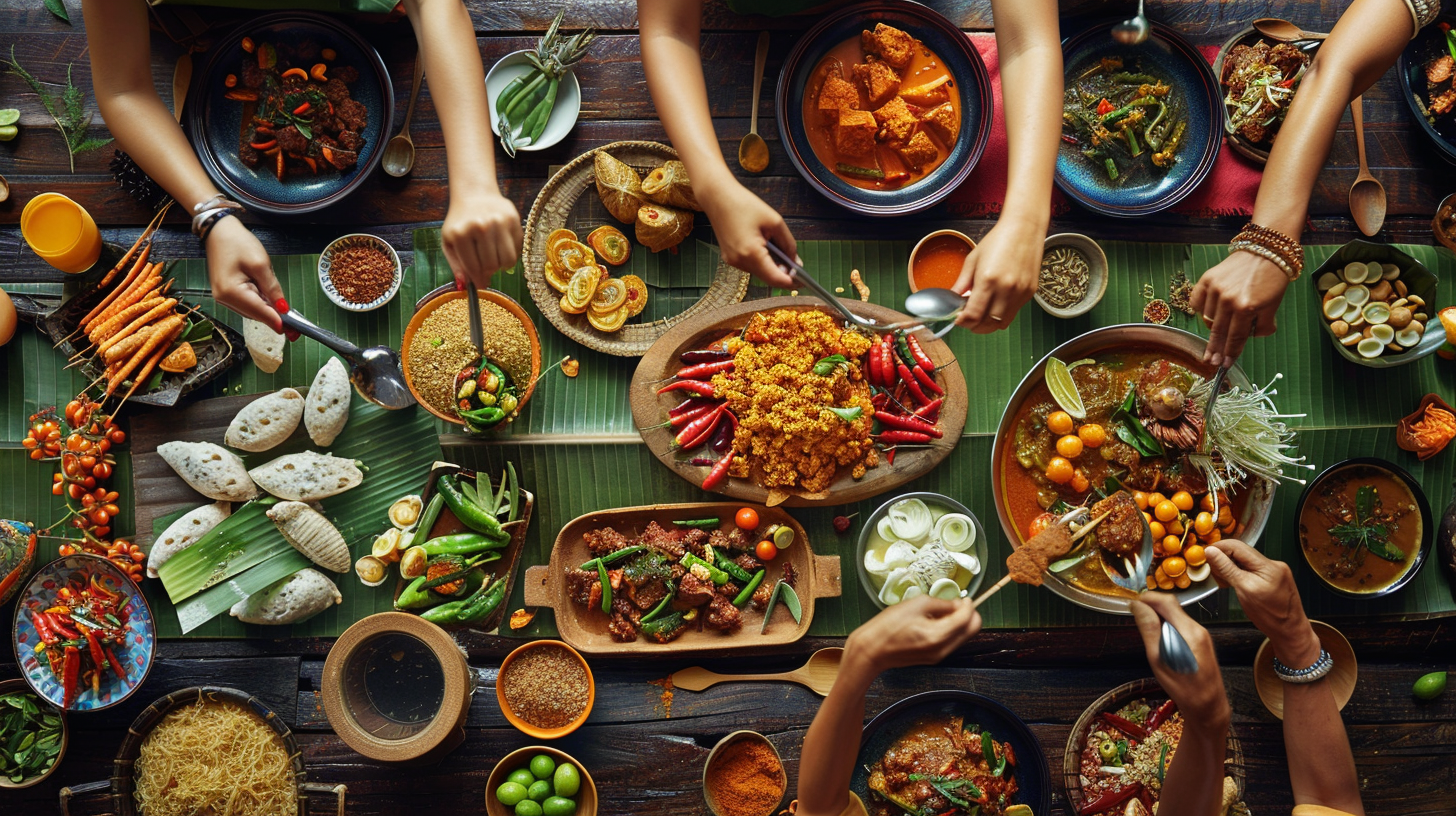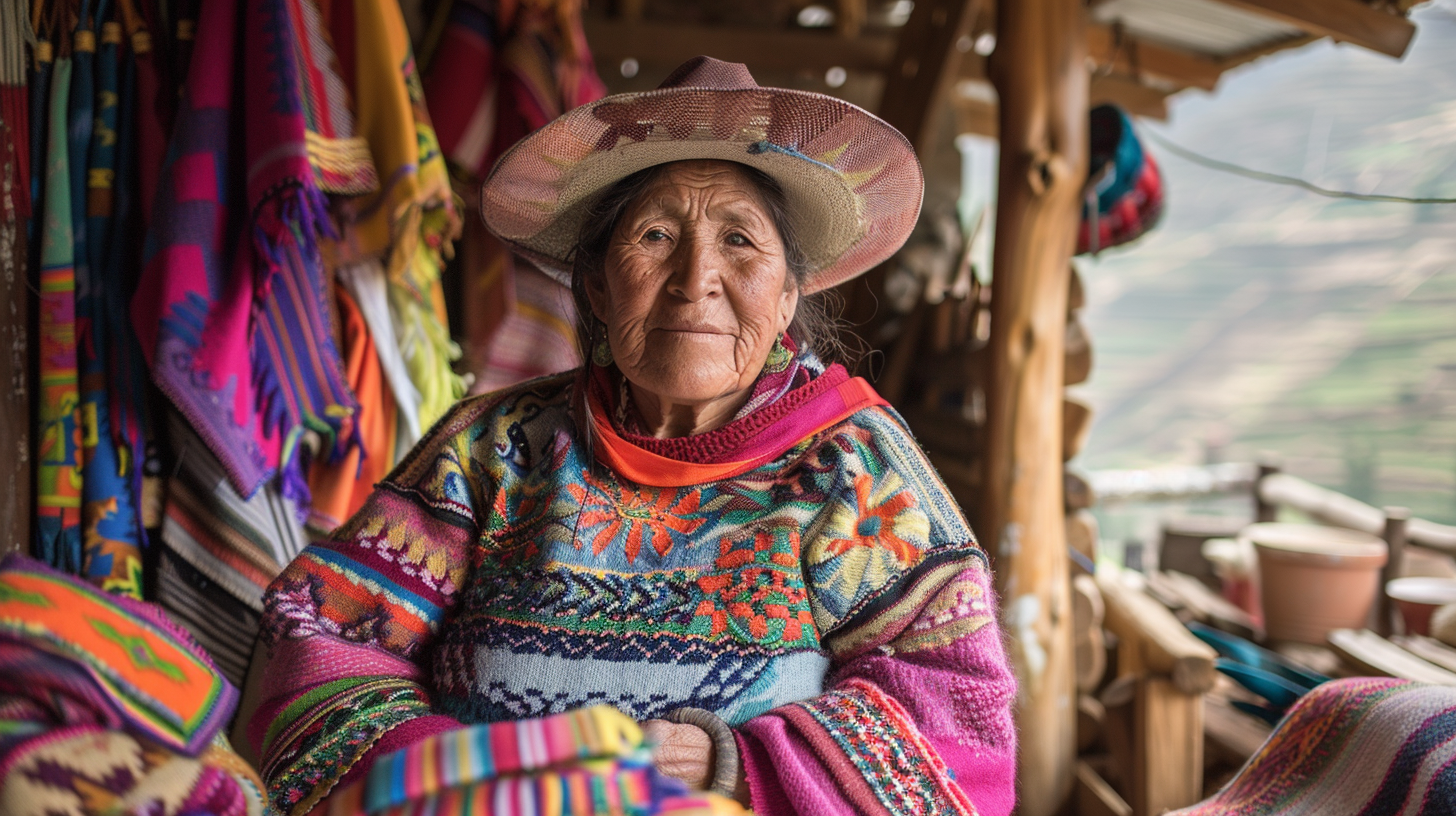Table of Contents Show
Like a tapestry woven from countless colorful threads, food embodies the rich diversity of cultures around the world. We’re fascinated by the stories that each dish tells, the traditions it upholds, and the communities it brings together. From the reimagined spice routes that connect distant lands to the festive dishes that mark celebrations across cultures, we find ourselves on a journey to uncover the historical significance behind ingredients and techniques that have shaped culinary practices. As we explore traditional cooking methods and the global tapestry of street food, we invite you to join us in uncovering the stories that make food much more than sustenance. What revelations might we uncover together?
Key Takeaways
- Culinary traditions are deeply intertwined with cultural identity and history.
- Street food serves as a vibrant reflection of global cultural diversity.
- Traditional cooking techniques and ingredients tell stories of human ingenuity and cultural exchange.
- Engaging with diverse culinary traditions fosters community connection and global understanding.
The Spice Routes Reimagined
Often, we overlook how the ancient spice routes have shaped modern culinary landscapes. These ancient pathways, which once connected distant lands through trade, now weave through our kitchens, bringing with them stories of adventure, exchange, and fusion. We’re not just talking about a sprinkle of pepper or a dash of cinnamon; we’re exploring a legacy that has transformed our palates and culinary practices.
We relish the freedom to experiment with flavors that were once exclusive to the wealthiest tables in distant lands. Now, in our global village, we’ve got the world’s pantry at our fingertips. It’s thrilling to think that the spices we casually pick up from the supermarket shelf were once worth their weight in gold. They’ve traveled through time and space, surviving empires and revolutions, to find a place in our homes and hearts.
In reimagining the spice routes, we’re not merely retracing the paths of ancient traders; we’re embracing a spirit of exploration and openness to the unknown. We blend, adapt, and innovate, creating dishes that tell new stories. This journey isn’t just about discovering foreign flavors; it’s about breaking down barriers and building bridges between cultures.
Our culinary adventures reflect a desire for freedom – freedom to explore, to create, and to share. As we experiment with these age-old spices, we’re paying homage to the past while crafting a future where the world’s cuisines mingle and flourish together. The spice routes, reimagined, offer us a taste of this boundless freedom, inviting us to explore the rich tapestry of global culinary traditions.
Festive Dishes Across Cultures
As we explore the world of festive dishes across cultures, we uncover the rich tapestry of traditions that unite and celebrate our global community. Each dish tells a story, a narrative of history, identity, and belonging, embodying the essence of cultural freedom and expression. From the intricate layers of a Mexican mole sauce served during Dia de los Muertos to the fragrant spices of biryani cooked in homes across South Asia during Eid, these culinary masterpieces are more than just food; they’re an expression of joy, memory, and communal spirit.
In the heart of winter, we’re drawn to the warmth of the Chinese New Year’s dumplings, symbolizing prosperity, and to the comforting embrace of a Thanksgiving turkey, a centerpiece that brings families together in gratitude in the United States. As spring blossoms, we’re invited to partake in the vibrant colors of Holi with sweets like gujiya, and to break fast with dates and water during Ramadan, a practice that reminds us of the value of reflection and community.
These festive dishes do more than just satisfy our hunger; they’re a call to gather, to share stories, and to celebrate the diverse tapestry of human culture. They remind us that in every corner of the globe, there’s a story of freedom, identity, and community waiting to be savored. As we indulge in these traditions, we’re not just eating; we’re participating in a global feast that honors our shared humanity and the infinite ways we express our freedom through the universal language of food.
Ingredients With Historical Significance
Delving into the world of culinary traditions, we find that certain ingredients carry a profound historical significance, shaping dishes that tell the stories of our ancestors. These ingredients aren’t just flavors; they’re echoes of the past, offering us a taste of history and a connection to those who came before us.
Take, for instance, spices like cinnamon and nutmeg, which were so valued they spurred global exploration and trade. These weren’t just for adding depth to dishes; they represented wealth, power, and the blending of cultures. Imagine the daring voyages and the blending of worlds they symbolize, all present in a single bite of a spiced dish.
Or consider corn, a staple in many cultures, especially in Native American and Mesoamerican cuisines. It’s more than just a crop; it’s a symbol of sustenance, innovation, and community. Corn has been central to rituals and meals, showing how essential ingredients can be to our identity and survival.
Rice, another cornerstone, tells countless tales—from Asian paddies that speak of agricultural advances to African fields that whisper of colonial trade and forced labor. Each grain carries the weight of human history, illustrating how something so small can be so significant.
We’re not just eating; we’re partaking in a legacy. These ingredients, and many others, are the threads that weave the fabric of our shared human experience. They remind us that our quest for freedom and understanding isn’t new. Our ancestors sought the same, leaving us clues in the flavors they cherished and passed down through generations.
Traditional Cooking Techniques
Exploring traditional cooking techniques allows us to uncover the methods that have shaped culinary practices for centuries. These techniques, passed down through generations, aren’t just about preparing food. They’re a confirmation of human ingenuity, adaptability, and the desire to create something deeply satisfying from the earth’s bounty.
We’ve discovered that many of these methods don’t just survive; they thrive because they encapsulate the essence of freedom. They offer us a way to connect with our ancestors, understand our history, and, more importantly, to innovate. Take, for instance, the art of fermentation. This ancient method isn’t just about preserving food; it’s about enhancing flavors, revealing nutritional benefits, and celebrating the unpredictable beauty of natural processes. It’s a technique that says, ‘Let’s collaborate with nature, not control it.’
Similarly, the practice of smoking meats and fish speaks to a timeless wisdom. It’s a method born from necessity, perfected over time, and now, a cherished tradition that imparts unique flavors impossible to replicate with modern shortcuts. It’s a slow, patient process, a reminder in our fast-paced world that some things can’t—and shouldn’t—be rushed.
And let’s not forget about the simple, yet profound, act of cooking over an open fire. This primal method connects us directly with nature, demanding nothing but our attention and respect for the elements. It’s a celebration of freedom, a dance with fire, air, and earth, producing meals that are as nourishing as they are flavorful.
In embracing these traditional cooking techniques, we’re not just preserving history; we’re actively participating in a cultural legacy that values freedom, creativity, and a deep respect for the natural world.
Street Food: A Global Tapestry
We can’t talk about culinary traditions without delving into the vibrant world of street food, a global tapestry that weaves together flavors, cultures, and people. It’s a domain where freedom reigns supreme, where the rules of formal dining blur, and the essence of a place pours out onto the streets, offering a bite of authenticity to anyone who wanders by.
Street food embodies the spirit of cultural exchange. It’s where we find the heartbeats of cities, from the bustling lanes of Bangkok’s night markets to the colorful food trucks lining New York’s avenues. Each stall and cart tells a story, a recipe passed down through generations, adapted and evolved, yet rooted in tradition.
We revel in the thrill of discovering new tastes and textures, of hearing the sizzle and pop from a vendor’s grill, the aromatic spices wafting through the air, beckoning us closer. It’s a sensory journey that doesn’t just fill our stomachs but feeds our soul, connecting us to the lives and histories of others.
In our quest for freedom, street food offers an escape, a way to break free from the mundane and plunge into the unknown. It challenges us to step outside our comfort zones, to taste, to explore, to engage with the world in its most raw and real form.
Conclusion
We’ve journeyed through the rich tapestry of culinary traditions, discovering how food intertwines with culture. From the reimagined spice routes to the vibrant street food scenes worldwide, it’s clear that our plates hold stories as intricate as a spider’s web. Ingredients and techniques passed down through generations highlight the deep-rooted connections we share with our ancestors. Indeed, exploring food traditions is like revealing a treasure chest, disclosing the precious gems of our collective human experience.








